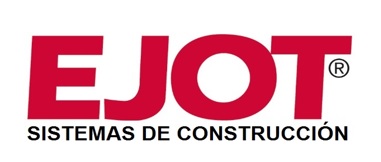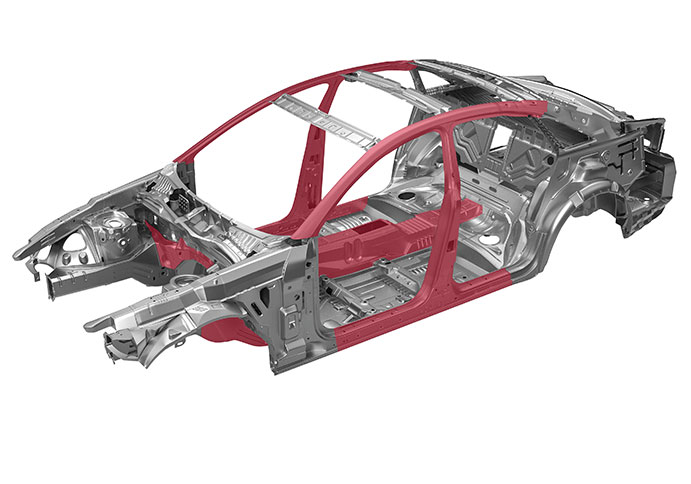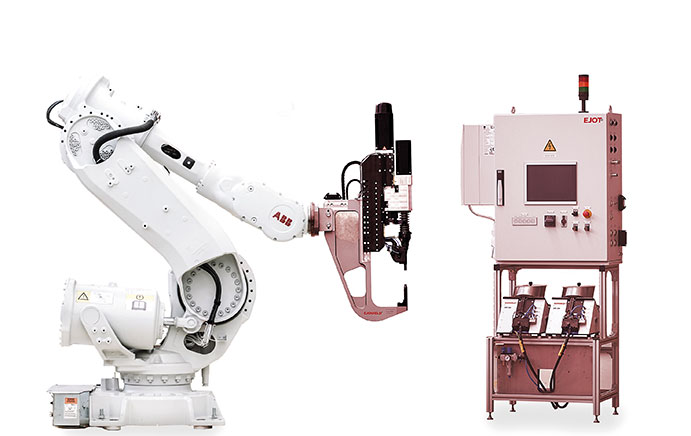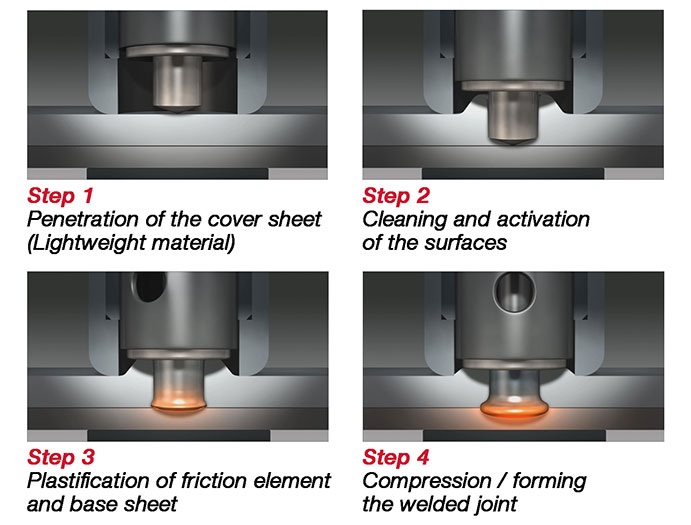Innovative joining technology for the automotive hybrid and lightweight construction
The range of potential applications for lightweight materials has continuously increased over the last few years. Especially in the automotive industry, there are more and more applications for lightweight materials since a significant reduction of CO2 emissions can only be achieved by way of considerable weight reductions in vehicle design. For this reason, lightweight and hybrid design solutions are now integrated into nearly all components of future vehicles.In particular, multi-material car body design is characterised by a large number of materials used. In addition to various types of steel and aluminium, especially state-of-the-art, hot-formed boron steels, such as Usibor® from Arcelor Mittal, should be mentioned, as they are used for structural and safety components in vehicles. These steel types provide excellent crash resistance and a weight saving potential between approx. 30% and 50%, compared to common cold-formed steel grades.
The EJOWELD® technology
An innovative option for joining different materials and semi-finished products is the so-called friction element welding which is marketed by the specialist in joining techniques EJOT under the brand EJOWELD®. This innovation offers the possibility of joining multi-material designs, in particular lightweight materials and ultra-high strength steels, with a friction welding fastener setting tool suitable for robot integration.
The characteristic feature of the EJOWELD® technique is a rotating friction element subjected to axial force, which first penetrates the light metal component and is subsequently welded to the underlying super-high-strength component. The welding results from the friction-induced heat input and the high surface pressure on the joint. No pre-holes are necessary for this process, and high-strength and high-resistant spot joints are created. EJOWELD® provides for a fast, automated, high-strength and reproducible joining process, even without pre-treatment of the parts.
The EJOT friction element welding application is designed as a complete system comprising the actual friction element, the joining process, the automated friction element feed and a friction welding fastener setting tool suitable for robot integration. The equipment is designed as a modular system and provides maximum flexibility for adaptation to the appropriate joining task.
Benefits for industrial users
The innovative joining technique EJOWELD® makes it possible to join new materials and material thickness combinations which have not been feasible to date. This provides the possibility, in particular for car body designers, to join metallurgically different materials reproducibly and with high strength. Merely two or three types of joining elements are required to join a large number of material combinations for multi-material design which are commonly used in the automotive industry.
The advantages for the user are the short process times (approx. 0.7 ... 1.8 seconds per spot joint), simple adaptation to different materials and to the material thickness of the parts to be joined, and the high energy efficiency compared to hydraulic, pneumatic or electrically driven joining techniques. Further advantages are to be seen in the mass- and interference-edge-optimised design of the friction welding equipment, which allows for integration with robots and use in the confined spaces of car bodies.
A so-called application check is offered for the EJOWELD® joining technology which enables the user to make a general statement about the feasibility of his specific joining task. It is essential to distinguish which materials and thicknesses are to be used and which space is available. Sign in to the EJOT website under "CAD & More“ to be able to use our calculation service directly online.
Process quality
Online process control with a very high rate of measurement value sampling forms the basis for a dynamic control concept with a quality rate of 99.995%. This concept allows to identify and evaluate all influences and to adapt the sequence of the joining process correspondingly. To be able to evaluate the friction welded joint as a whole, the joining specialists from EJOT developed a so-called joint quality factor to evaluate the performance characteristics of a joint. Ultrasonic testing can also be used as a non-destructive test method.
Further possible applications
EJOWELD® is primarily intended to serve the manufacturing process of components or subassemblies for the automotive industry. This technique can naturally also be interesting for other metal-working companies in which the potentials for an optimised value chain are to be utilised. Another special possible application for EJOWELD® lies in production processes which require energy-efficient joining technique since friction element welding requires merely an electrical energy of only approx. one kilowatt hour for 1,000 spot joints.
* Usibor® is a registered trademark of ArcelorMittal, Luxembourg.
The advantages for the user are the short process times (approx. 0.7 ... 1.8 seconds per spot joint), simple adaptation to different materials and to the material thickness of the parts to be joined, and the high energy efficiency compared to hydraulic, pneumatic or electrically driven joining techniques. Further advantages are to be seen in the mass- and interference-edge-optimised design of the friction welding equipment, which allows for integration with robots and use in the confined spaces of car bodies.
A so-called application check is offered for the EJOWELD® joining technology which enables the user to make a general statement about the feasibility of his specific joining task. It is essential to distinguish which materials and thicknesses are to be used and which space is available. Sign in to the EJOT website under "CAD & More“ to be able to use our calculation service directly online.
Process quality
Online process control with a very high rate of measurement value sampling forms the basis for a dynamic control concept with a quality rate of 99.995%. This concept allows to identify and evaluate all influences and to adapt the sequence of the joining process correspondingly. To be able to evaluate the friction welded joint as a whole, the joining specialists from EJOT developed a so-called joint quality factor to evaluate the performance characteristics of a joint. Ultrasonic testing can also be used as a non-destructive test method.
Further possible applications
EJOWELD® is primarily intended to serve the manufacturing process of components or subassemblies for the automotive industry. This technique can naturally also be interesting for other metal-working companies in which the potentials for an optimised value chain are to be utilised. Another special possible application for EJOWELD® lies in production processes which require energy-efficient joining technique since friction element welding requires merely an electrical energy of only approx. one kilowatt hour for 1,000 spot joints.
* Usibor® is a registered trademark of ArcelorMittal, Luxembourg.



